Read Reviews
The Best Grass Seed for Shade
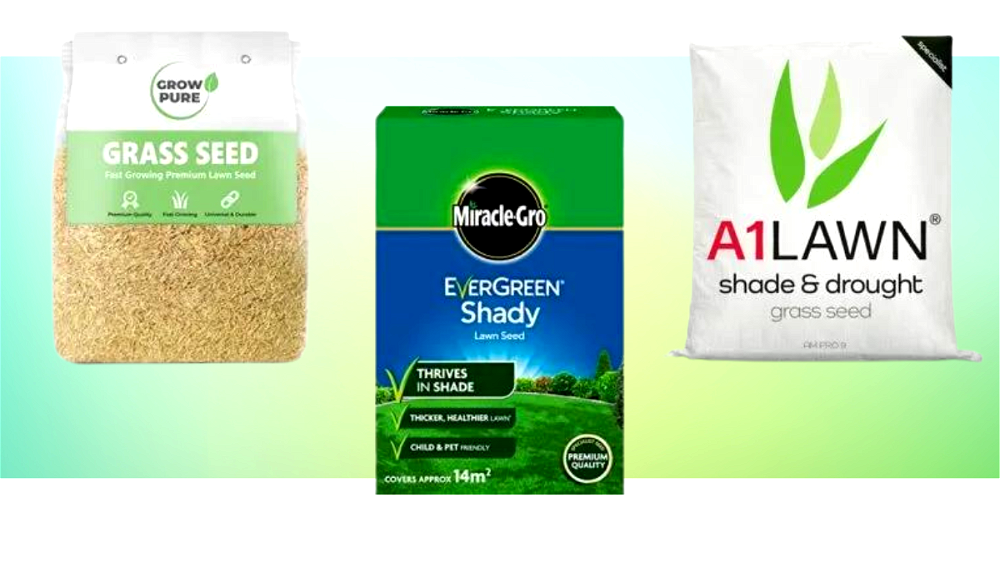
-
Grow Pure Fast Growing Premium Lawn Seed
-
Gardeners Dream Shady Area Lawn Seed
-
Miracle-Gro EverGreen Shady Lawn Seed
-
A1 Lawn AM Pro 9 Shade & Drought Grass Seed
-
Gro-Sure Shady Lawn Seed
-
The Grass People Hard Wearing Grass Seed
-
Moowy Shade & Sun Grass Seed
Grass Seed for Shade Reviews
- Grows under the shade of trees and in gardens that don't receive a lot of light
- Good value for money as one bag can cover around 145 m²
- Provides good, even coverage
- Results are slow and it often takes between 2 - 6 weeks for germination
- Quite a lot of maintenance required to make sure it is well watered
- The grass that grows has relatively thin blades and isn't very hardwearing
- Seed Quality
- 4.2
- Seed Hardiness
- 4.2
- Growth Speed
- 4
- Value for Money
- 4.5
If you’ve previously struggled to persuade grass to grow on your shady lawn, the Gardeners Dream Shady Area Lawn Seed is a good option to consider.
Made up of a combination of 70% Strong Creeping Red Fescue and 30% Chewings Fescue, it’s capable of growing in areas with little to no sunlight. Whether you have a bare patch of garden under a shady tree, or a north-facing plot that’s often eclipsed during the day, this seed increases the chances of having a full blanket lawn.
It’s slow-growing grass, and often takes longer than the described ‘5 – 10 days’ to germinate. Generally speaking, it can take anywhere between 2 – 6 weeks to show signs of germination, and does require quite a lot of watering and care as it grows. The resulting grass has relatively thin individual blades, but offers good coverage. However, it’s not especially hardwearing.
If you have children or pets, the areas with this grass are likely to show wear quickly, though this is often the case for grass in shaded areas.
Another bonus of this grass seed is the amount that you get for the price paid, and it’s one of the best grass seeds for shade if you’re after value for money. Sold as a 5 kg bag, one bag can cover approximately 145 m² as long as it is measured carefully and sown using the instructed 35 g/m².
Did you find this review helpful?
- Results are quick with many people noticing growth within 10 days
- Easy to apply straight from the box
- Sprinkler on the side of the pack for easy application
- Does not contain ryegrass so the grass isn’t too coarse
- Not suitable for areas in full sun
- Once opened, the box cannot be resealed which means it’ll need dispensing into a separate container if you don’t use it all at once
- Seed Quality
- 4.5
- Seed Hardiness
- 4
- Growth Speed
- 5
- Value for Money
- 4
If you’re after a grass seed that is suitable for both shady conditions and has good drought tolerance, the Miracle-Gro EverGreen Shady Lawn Seed is a worthwhile purchase. As an added bonus, it generally germinates within 10 days.
This quality seed contains species that can withstand drought and shade – it contains a mixture of Fescues as well as Brown Top Bent. Unlike many of the lawn seeds featured here, this Miracle-Gro mix deliberately doesn’t include ryegrass meaning that the grass that grows shouldn’t be overly coarse – instead, growing as a fine-but-dense lawn.
With a handy sprinkler built into the side of the pack, this seed is very easy to use and spread. Simply rake the area you are looking to seed, shake the box and apply seed to the grass in a criss-cross pattern.
The seeds are reasonably high maintenance in the weeks following sowing, requiring regular watering. One 420 g pack covers 14 m² of lawn – so this seed is best suited to small lawns and reseeding unless you are prepared to buy more than one packet (which may not be cost effective).
The growth speed of this seed is a factor that’s particularly impressive. Many people notice growth within ten days in shady areas, although in some cases it grows in as little as seven. Conditions do need to be pretty optimal to achieve the coveted seven-day germination, however.
Overall, this is one of the best grass seeds for producing quick results in notoriously-difficult shady areas. The grass produced is even and thick and the sprinkler on the side of the pack ensures that application can be done relatively easily.
Did you find this review helpful?
- Comes with plenty of information on how to effectively use this seed
- Large 5 kg bag has a wide coverage area of 140 m²
- Most people see results within 7 - 21 days
- Large variety of grass species suitable for lots of different conditions
- Grows well in north-facing gardens
- Slow germination
- Reasonably high maintenance - requires a lot of watering whilst germinating
- Seed Quality
- 4.5
- Seed Hardiness
- 4.5
- Growth Speed
- 4.5
- Value for Money
- 4.5
The A1 Lawn AM Pro 9 Shade & Drought Grass Seed is a premium seed, designed for shady areas. It’s one of the best grass seeds for shade that also works on sunny/partially sunny areas due to the large variety of seed included.
This seed is made up of a combination of seven different grass species including Dwarf Perennial Ryegrass, Creeping Red Fescue and Ryegrass for durability. The specialised blend is great for repairing shady areas, but can also be used for new lawns. In ideal conditions, results are seen within 7 – 21 days, although it may take longer to germinate in areas without a lot of sun. With this seed, patience is key!
It contains more species of seed than other grass seed featured on this page, which is reflected by the higher price tag. It’s relatively durable, so suitable for high traffic areas and grows well in shaded areas. The seed has been certified by DEFRA, FERA and SASA, plus it’s been rigorously tested under a variety of conditions.
With a huge amount of information included on how to effectively use this grass seed, this mix is suitable for those with little experience of seeding lawns. It can be sown by hand or using a spreader. Like most seed, it does require a lot of maintenance following application. It should be watered morning and night if there is no rain forecast.
This grass seed comes in a range of size bags, with 5 kg covering a large 140 m² area. If stored correctly away from temperature extremes or damp, any leftover seed should be fine to use the following season.
Did you find this review helpful?
- Produces good results in shady areas
- Grass grows thick and even
- Easy to use seed applicator included in the pack
- Good for covering small patches without having to buy loads of seed
- Results aren fairly slow, with most people seeing germination in 2-4 weeks
- A lot of watering is required to keep seeds damp after application
- Seed Quality
- 4
- Seed Hardiness
- 4.5
- Growth Speed
- 4.5
- Value for Money
- 5
This Gro-Sure Shady Lawn Seed comes with a built in spreader, so there’s no need to buy your own or risk an uneven application spreading seed by hand.
This seed contains dwarf perennial ryegrass and creeping red fescue; a mix that works well in shady conditions. It’s one of the best grass seeds for shade if you’re working to a budget and only filling a small area. It comes in a small 300 g box that can cover 10 m² so for this reason it’s best for overseeding and filling in bare patches.
Although this grass seed is easy to use thanks to the built in spreader, it shouldn’t be applied when the soil temperature is below 10°C or above 19°C. For this reason, it should be sown between April and May or September and October.
Overall, this grass seed has great shade tolerance with the added benefit of being very affordable. If you’re looking for an easy-to-use seed with a built-in spreader, particularly for smaller areas, this Gro-Sure seed is a great option.
Did you find this review helpful?
- Grows well regardless of light exposure - can survive in both sun and shade
- Germinates quickly, often within 6 days of planting
- Relatively low-maintenance seed that does not need a lot of care whilst growing
- Produces thick, hardwearing grass that can withstand pets and children
- Can also grow in clay-based soil
- Grass can dry out in very hot whether, but tends to bounce back after watering
- Seed Quality
- 4.2
- Seed Hardiness
- 4.3
- Growth Speed
- 5
- Value for Money
- 4.5
If your lawn is predominantly in shade, or has a mixture of light and dark areas, The Grass People Hard Wearing Grass Seed can help create a thick, even lawn.
Made up of 80% Perennial Ryegrass and 20% Strong Creeping Red Fescue, it contains more of a hard-wearing combination than some entirely-Fescue based seed mixes. The resulting grass has thick blades and is suitable for pets and families; it won’t instantly wear thin.
Whereas some grass created for shade can become scorched if it receives too much sunlight, this Hard Wearing Grass Seed can be grown successfully across a range of shady, wet and dry areas. It will also grow in clay-based soil, and generally doesn’t require too much maintenance.
After sowing, signs of germination take approximately 6 days to appear and a 10 kg bag will cover approximately 200 m². Sewing in either Spring or Autumn is recommended, when the ground temperature is above 8°C.
Due to its ability to grow well, no matter if there is plenty of light or predominantly shade, this is one of the best grass seeds for shade or sun. If your garden has a combination of different light exposure, terrain or growing conditions, The Grass People Hard Wearing Grass Seed should be able to deliver some good results.
In very hot weather, the grass may need some extra attention so that it doesn’t dry out, but it tends to bounce back quickly once there’s enough water available.
Did you find this review helpful?
- Not fussy about time of year when planted - can be sown from February to October
- Designed for cold weather and UK climates so the weather doesn’t need to be perfect for the seeds to germinate
- Can grow under shaded tree canopies
- Can be used to cover bare patches of ground with limited preparation
- In spring/autumn conditions, germinates quickly in around 5 days
- If the weather is very dry, can take a lot of maintenance to encourage growth with frequent watering
- Relative expensive per metre square coverage compared to a lot of other seeds
- Seed Quality
- 4
- Seed Hardiness
- 4
- Growth Speed
- 4.5
- Value for Money
- 3.8
For any football fans out there, the Moowy Shade & Sun Grass Seed is produced by the same company that delivered grass seeds to many of the 2018 World Cup stadiums. And even if you don’t love the game, it’s hard to deny that stadiums have got excellent grass!
This Shade & Sun Grass Seed is made up of three different grass varieties. It’s 50% Red Fescue, 40% Perennial Ryegrass, and 10% Kentucky Bluegrass. Overall, this produces grass that is thick and hardwearing, and relatively resilient when it comes to growing conditions; it can grow in shaded areas, and some customers even report success on ground with very little preparation.
If you’re struggling to maintain a bed of green grass under trees in the garden, or want to cover any area that’s shaded or proven difficult with other grass, Moowy is a tough seed that survives in sunless areas.
It also handles cold weather well and can be planted all the way through from February to October. Although germination will likely be slower in the colder months, it’s still one of the best grass seeds for shady areas if you hope to plant outside of the typical growing season.
For the most part, this seed germinates in approximately 5 days and one 880 g bag can cover an area of approximately 50 m² when overseeding. Comparing with other grass seed, such as the Gardener’s Dream seed, Moowy is relatively expensive per metre squared.
Did you find this review helpful?
How to Choose the Best Grass Seed for Shady Areas
A lush green lawn is something many of us gardeners strive for, but unfortunately wear and tear can quickly make any pristine lawn look old and tired.
The right grass seed is like a magic formula for your lawn, you just need to find the best one.
This is especially true if your garden has a lot of shade. If you have a garden with shady spots, you’ll need to put a little more thought into choosing the right grass seed for your lawn. Not all grass seed will flourish in the shade, and you may end up with something pretty patchy.
If you’re not sure what to look out for, the following information will help you find the best grass seed for your shady garden.
READ NEXT: The Ultimate Monthly Lawn Care Guide
Different Grass Varieties
Grass seed is rarely made up of just one species of grass. Instead, grass seed is made up of several variations in order to improve the properties of your lawn.
Whilst there are a lot of different species of grass, here are some of the ones most frequently found in grass seed. Remember, not all types of grass are suited to the same growing conditions.
Dwarf Ryegrass
Helps produce a thicker lawn because several grass blades shoot out from the same stem. Grows quickly, and doesn’t take long to establish across the lawn. Does well in damp/moist soil but not in shade.
Red Fescue
Produces relatively fine blades with a deep green colour. It’s low maintenance but doesn’t survive well in hot climates. Plus, it’s not very hardwearing. It grows well in cool, shaded areas.
There are a lot of different types of Fescue grass. Often ‘Red Fescue’ will refer to ‘Creeping Red Fescue’ which slowly grows across the lawn in small clumps. It’s useful when mixed with other grass species, as it will spread where they can’t grow.
‘Slender Creeping Fescue’ has very fine blades. You may have noticed it around the bottom of tree trunks. It grows very well in shade, but is relatively weak. It’s also good for coastal areas because it can grow in saltier ground.
Other types of Fescue include ‘Chewings Fescue’ which is non-creeping but quite tolerant of different conditions. ‘Tall Fescue’ is a good option for wet weather and gardens that get waterlogged easily. It’s generally quite an all-round resilient grass species, and also grows well in clay soil.
READ NEXT: Simple Lawn Care Tips
Browntop Bent
This is a particularly hardy grass species. Much like the Creeping Fescues, it has an extensive root system and can spread. It can grow new plants from its roots. This grass thrives in a lot of different conditions and can grow in poor quality and damp soil.
Kentucky Grass (Smooth-Stalked Meadow Grass)
Good, hardwearing grass that can deal with a fair amount of wear and tear. Good for high-traffic areas. Survives winter well, and can cope with drought (although it may go dormant). The grass blades are quite broad and have a rich green colour.
READ NEXT: How Long Does Grass Seed Last?
Most Suitable Grass for Shady Areas
As you can see in the information above, not all grass species are suitable for shady areas. That’s why it’s so important to buy seed specifically-design for shady, if you have a shaded garden.
If your garden is in partial shade, and some of it receives direct sunlight, you should look for a seed mix that contains varieties for both conditions. Alternatively, use one species of grass on the lawn that received sunlight, and another species in the shade. However, this may cause aesthetic discontinuity across your lawn.
These grass species are most suitable for shady lawns:
- Browntop Bent. Requires plenty of water and moisture, so tends to thrive in shady conditions.
- Red Fescue. Spreads well and thrives in shaded areas.
- Perrenial Ryegrass. Requires partial sun, but can manage in areas that only receive 4 – 5 hours of sun a day.
- Kentucky Bluegrass. Can cope with light shade and combines well with Fescue. Kentucky Bluegrass provides a denser coverage than Fescue, so can fill in the gaps.
Coverage Area
The coverage area is important both when it comes to value for money and ease of use. If you have a large lawn, you’ll need to make sure you have enough grass seed to cover it.
Smaller containers of grass seed (with coverage under 100 m²) are best for smaller lawns. They are also a good option if you have just a small shaded area in your garden, or patches that need covering. While you may not need grass seed to cover the entire area, a small amount of seed specifically designed for shady areas can help fill patches and give your grass a new life.
For a medium size lawn you should look for a coverage of around 200 m².
READ NEXT: The Best Lawn Spreaders
Grass Seed for Shade FAQs
While the right grass seed can be very effective, you may still need to give the shaded areas in your garden a helping hand.
First of all, ensure you choose a durable and shade-tolerant seed such as Fescue.
For shaded areas, such as underneath a tree, it may help to fertilise more regularly as well.
You should also avoid cutting the grass too short in shaded areas, as this can cause a lot of stress on the grass.
Finally, if possible, give the grass as much sunlight as you can. This may mean you need to prune the tree to allow more sunlight through.
The best time to plant grass seed is in late spring or early autumn. This gives it the best chance of withstanding weeds, and the soil is still fairly warm. It should also get plenty of water at this time of year, unlike in the height of summer. Most grass seeds require a ground temperature of at least 8°C.
If creating a new lawn, there are several steps you can take to really get the best results:
- Ideally, plant in late spring/early autumn
- Loosen and aerate the soil by turning it over
- Remove any weeds
- Rake your soil and create a level surface with a lawn levelling rake
- Sow the seeds based on the manufacturer’s instructions: there may be some variation on how many g/m² is recommended. You should be able to see seeds on the surface of the soil after planting. If not, you have planted them too deep.
- Many gardeners choose to add a layer of topsoil after sowing the seeds. This may also help stop birds eating them all.
- Water the seed after sowing it and keep the ground moist. You should start to see grass growing after 2 – 6 weeks depending on the variety.
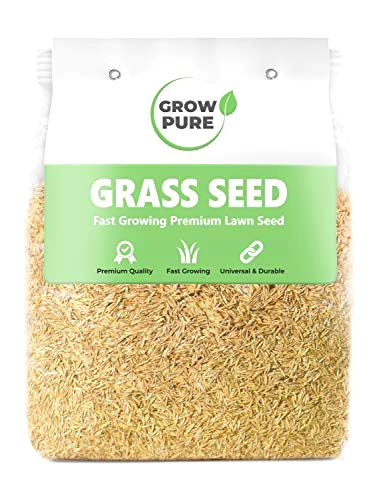

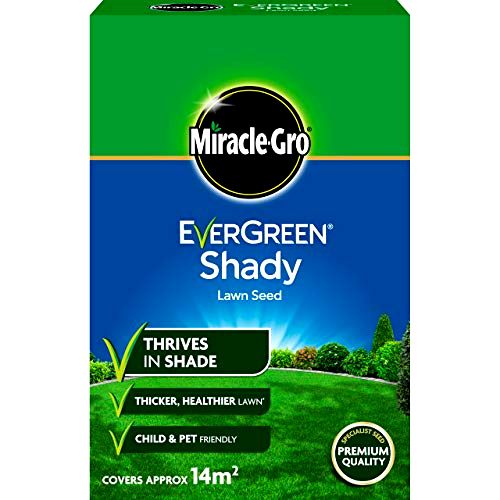
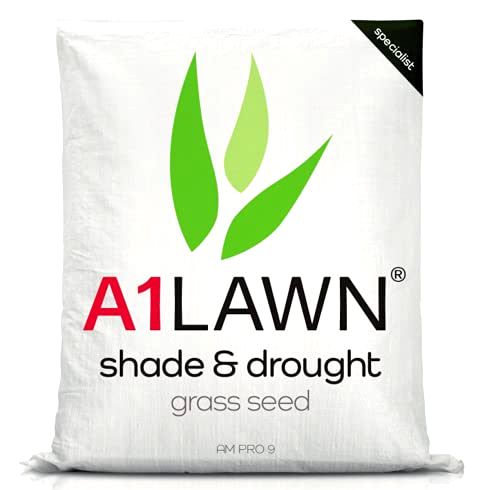
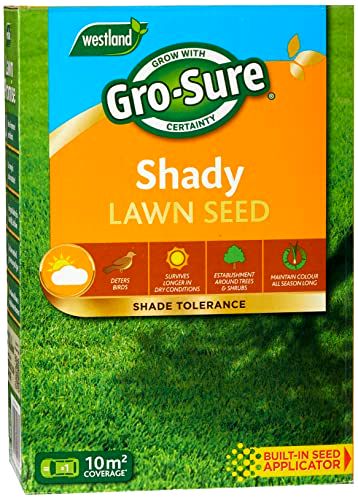
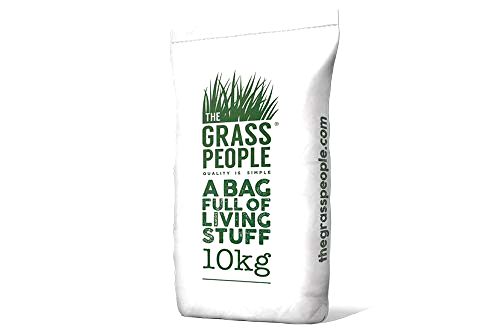
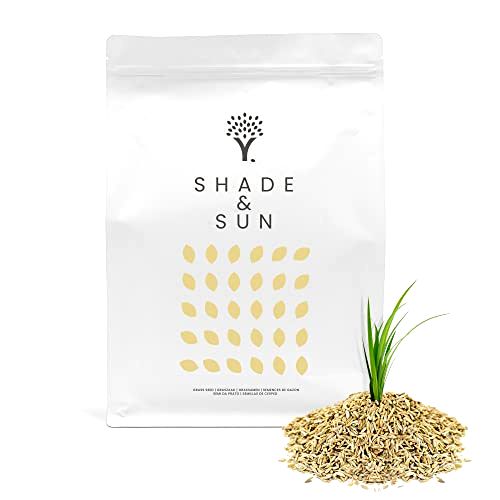

Share